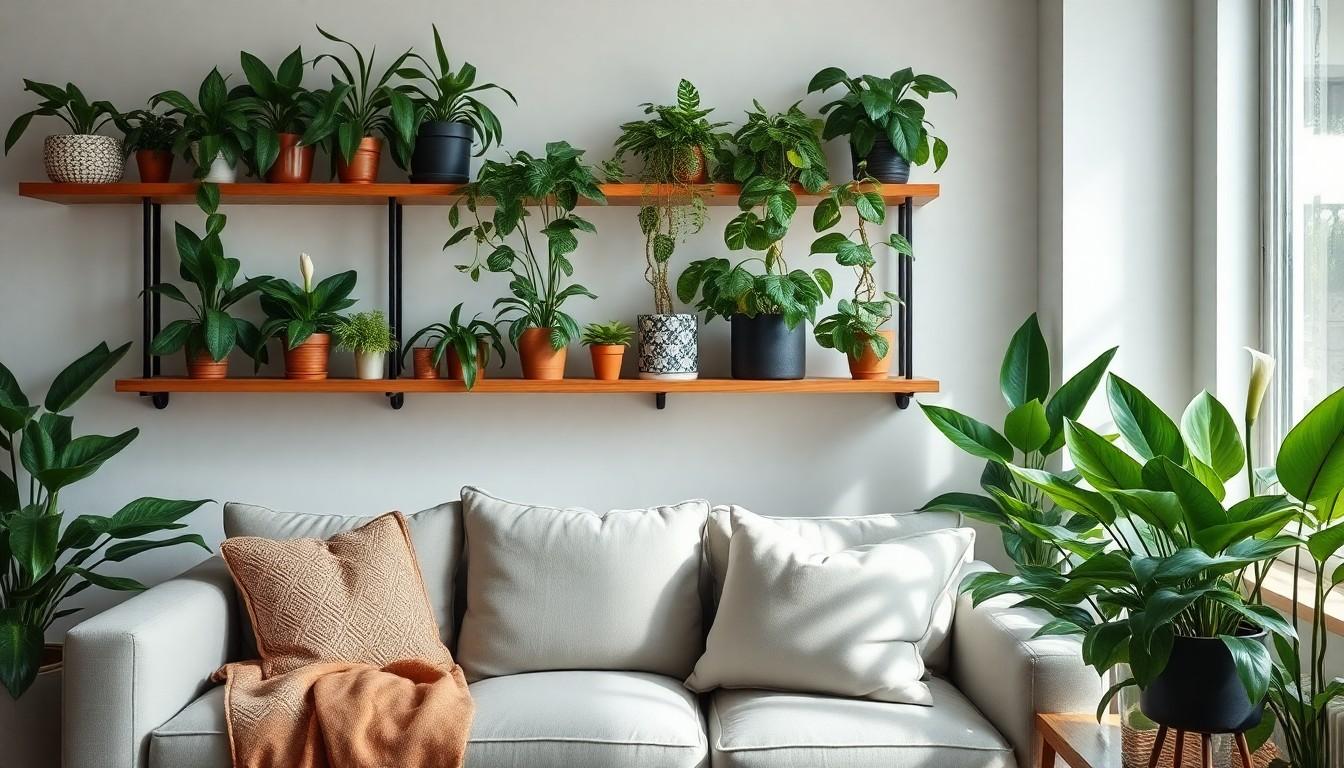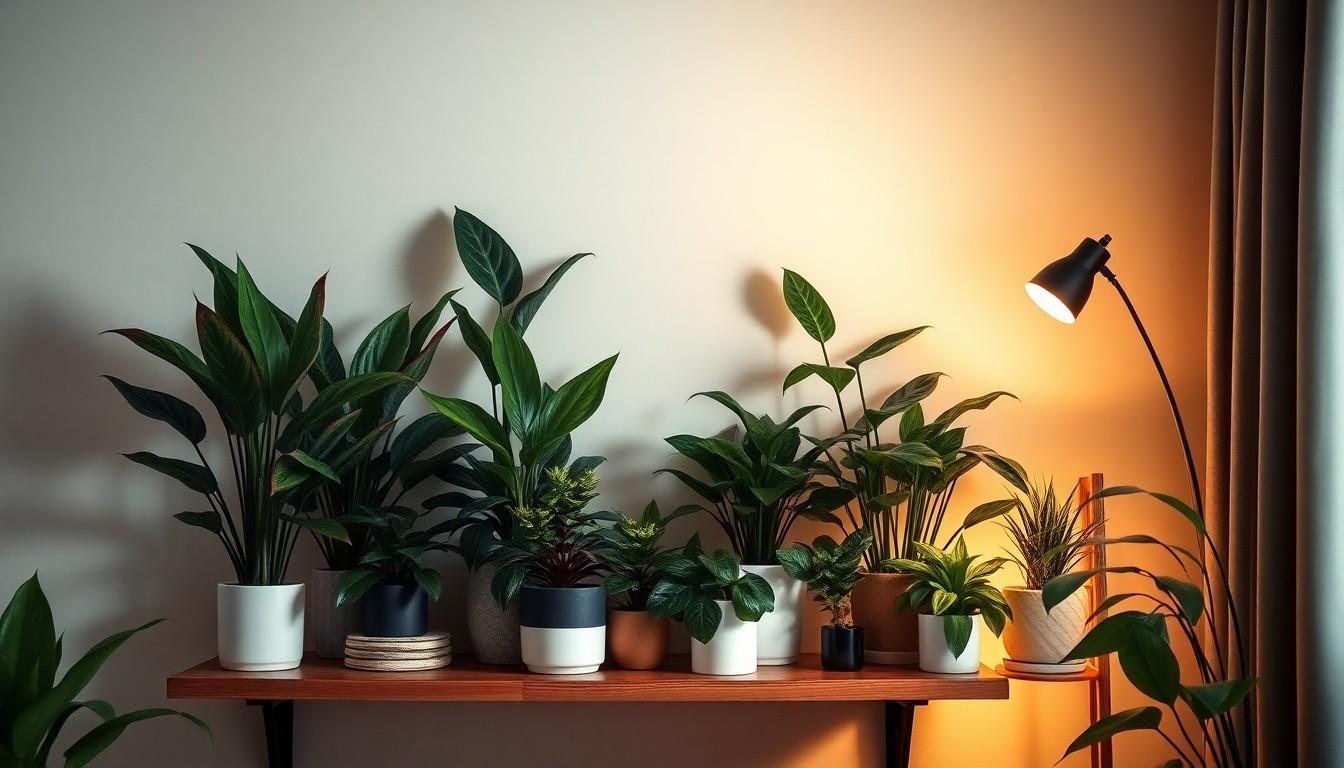Imagine a world where you can enjoy the beauty of greenery without the hassle of sunlight. Indoor plants that don’t need light are like the introverts of the plant kingdom—thriving in the shadows while still adding a splash of life to your space. Whether you live in a cozy apartment with limited windows or just want to spruce up that dim corner, these low-maintenance wonders are here to save the day.
Understanding Indoor Plants That Don’t Need Light
Indoor plants that don’t need light showcase remarkable adaptability. These plants naturally thrive in low-light environments. They can flourish in homes where sunlight is scarce or areas such as offices, basements, and windowless rooms. Notably, these plants utilize alternative methods for photosynthesis, enabling growth even in the absence of direct light.
Low-light plants such as snake plants, also known as Sansevieria, make excellent choices. They tolerate neglect and require minimal watering. Peace lilies, another popular option, offer beautiful white blooms while preferring indirect light. ZZ plants, with their glossy leaves, boast drought resistance and low maintenance requirements.
Ferns like the Boston fern also excel indoors. They thrive in humidity and can adapt to dim conditions. Spider plants, characterized by their arching leaves and spider-like offshoots, prefer indirect light yet exhibit growth in shaded areas.
Understanding the specific needs of each plant establishes a successful indoor garden. Consider the moisture and temperature preferences when selecting these plants to ensure optimal growth. Low-light indoor plants improve air quality by filtering toxins, contributing positively to overall health in enclosed spaces. As they enhance aesthetics, these plants also provide calming effects, benefiting overall well-being.
Integrating indoor plants that don’t need light fosters a tranquil atmosphere. Their versatile nature allows for creative arrangements. With careful consideration of each plant’s unique characteristics, anyone can cultivate a vibrant indoor environment.
Benefits Of Low-Light Indoor Plants

Low-light indoor plants offer significant advantages for urban dwellers and those with limited sunlight. Enhanced environments and improved well-being are just a few benefits they provide.
Air Purification
Air purification ranks among the top benefits of low-light indoor plants. Houseplants such as snake plants and peace lilies actively filter toxins like formaldehyde and benzene from the air. They absorb harmful pollutants and release oxygen, creating a healthier living space. Scientific studies indicate that indoor plants can reduce indoor air pollution levels by up to 87% within 24 hours. Choosing specific plants for air purification helps improve overall air quality while enhancing occupants’ health.
Aesthetic Appeal
Aesthetic appeal represents another key benefit of low-light indoor plants. These plants add vibrant life and color to indoor environments, transforming plain areas into inviting spaces. Boston ferns and ZZ plants bring lush greenery that softens hard edges in a room. Their versatility allows for creative arrangements, whether on shelves, tabletops, or as floor statements. With various shapes and sizes, low-light plants cater to diverse interior design styles, making them essential for a visually pleasing atmosphere.
Popular Indoor Plants That Don’t Need Light
Low-light indoor plants bring life to any space without requiring much sunlight. Here are some popular choices that thrive in dim conditions.
Snake Plant
Snake plants, known for their striking, upright leaves, adapt well to low-light areas. Tolerance to neglect makes them excellent for busy individuals. They store water in their leaves, allowing them to survive irregular watering schedules. This plant also purifies air, filtering out harmful toxins. Ideal locations include bedrooms and offices, where light may be limited. Their unique appearance complements various decor styles.
ZZ Plant
ZZ plants feature glossy, dark green leaves that add a touch of sophistication to any room. They thrive in indirect light and tolerate drought, making them suitable for low-light environments. Minimal care is required, as sporadic watering suffices. This plant’s resilience is further enhanced by its ability to survive in neglectful conditions. ZZ plants effectively improve indoor air quality, creating a healthier atmosphere. Position them on desks or shelves for optimal display, enhancing the aesthetic appeal.
Pothos
Pothos plants are popular due to their trailing vines and heart-shaped leaves. They adapt easily to low-light conditions, growing in various environments. Pothos also tolerates irregular watering, making them user-friendly. Their air-purifying abilities help eliminate toxins, promoting better indoor air quality. Hanging baskets or shelves showcase their beautiful vines, adding visual interest to any space. This adaptable plant encourages a peaceful ambiance in homes and offices.
Caring For Low-Light Indoor Plants
Caring for low-light indoor plants involves understanding their unique needs. Proper watering and soil selection play vital roles in their health.
Watering Tips
Watering requires attentiveness. Most low-light plants prefer to dry out between waterings, making overwatering a common mistake. Checking the top inch of soil for dryness ensures plants receive adequate moisture. For snake plants and ZZ plants, infrequent watering suffices; every two to three weeks works well. Peace lilies thrive with slightly more moisture, needing weekly hydration. By observing leaves, one can gauge water needs; yellowing indicates overwatering, while drooping suggests thirst.
Soil Requirements
Soil choice impacts growth significantly. Low-light plants often thrive in well-draining potting mixes to prevent root rot. A blend of peat moss, perlite, and potting soil offers excellent drainage and aeration. Snake plants and ZZ plants appreciate lighter mixes, promoting healthy root development. Peace lilies favor richer mixes with organic content, enhancing moisture retention. Regularly checking for compacted soil can maintain optimal conditions, ensuring roots access necessary nutrients. Choosing the right soil encourages vibrant health in these adaptable plants.
Conclusion
Indoor plants that thrive without light offer a unique solution for enhancing any space. Their ability to purify the air while adding aesthetic value makes them a smart choice for urban dwellers and those with limited sunlight. By selecting the right plants and understanding their care requirements, anyone can create a vibrant indoor environment. These resilient plants not only bring life to dim corners but also contribute to overall well-being. Embracing low-light indoor plants can transform a home or office into a refreshing oasis, proving that even in the absence of sunlight, nature’s beauty can flourish.

